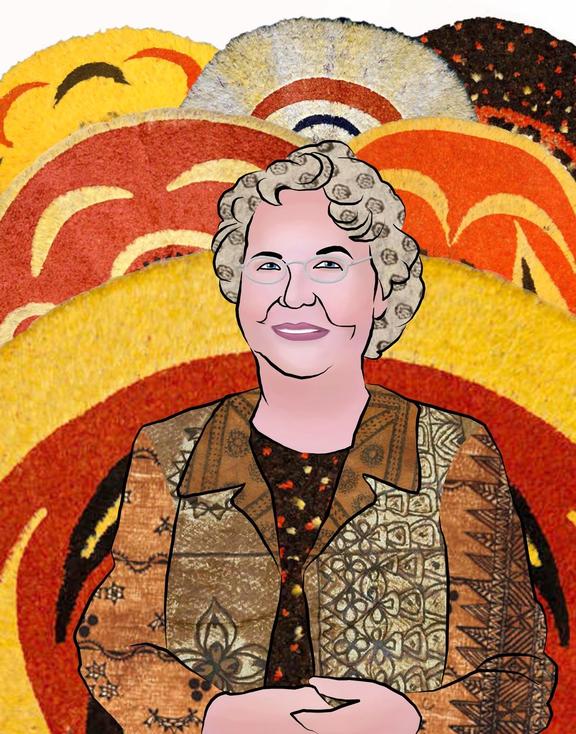Adrienne Lois Kaeppler, an American anthropologist who was regarded as an expert on Tongan dance and the work of Queen Sālote, has died aged 87.

“Why is a Palangi talking about this?”, Kaeppler said at the launching of the book Songs and Poems of Queen Sālote in Nuku’alofa in 2019.
“The short is answer is because Queen Sālote invited me to do so.
“It goes back to 1964 when I was a student. The first time when I came here, I came to a conference of the Pan-Pacific Southeast Asia Women’s Association Meeting. Queen Sālote invited us all and I gave the paper for the Hawai’ian Group which was about Hawai’ian music and dance.
“For the international night, I performed a Hawai’ian dance and the next day Queen Sālote saw me and she said ‘could you do that sort of thing for Tongan music and dance?’ and I said ‘oh, okay’. So I decided to stay, and I stayed for three months and Queen Sālote sent me to all the people she felt were the important people to pass on this kind of information.”
Dr Kaeppler researched the lakalaka, a mass dance that sometimes involved more than 1000 people, all singing and dancing in carefully synchronised motions, that had been passed down from generation to generation.
The American anthropologist said she had been supported and directed in her work by Queen Sālote, who introduced her to a number of the kingdom’s punake.
“Queen Sālote put me in contact with a number of important Tongan dance people. My first teacher was Tu’imala Kaho who taught me tau’olunga. Tu’imala’s mother, ‘Ana Malia and Uncle Vaisima (Hopoate) taught me ula and ‘otuhaka,” Dr. Kaeppler wrote in the introduction to her book Poetry in Motion.
She returned to Tonga for a year in 1965-66 and began to learn Tongan, in what was to become a transitional time for the kingdom.
During her doctoral research in the 1960s and onwards, she spent much time with Ve’ehala, Tupou Posesi Fanua, Sione Hau Koula, Tu’ialo Kefu, Malia Fusi, Kavapele, and Vaisima. She also worked with Catholic nun Sister Tu’ifua, who descended from a high ranking line of chiefs and who learned dancing from Malia Toto and Kolotile, both of whom danced for the immediate descendants of the last Tu’i Tonga.
She returned to Tonga nearly every year to continue her research and learn dance. She took part in the Lakalaka of the village of Ha’ateiho for the Coronation kātoanga of King Tāufa’āhau Tupou IV.
“As an outsider I have really only scratched the surface. Tongans have a more thorough and detailed understanding of dance and its place in their lives,” she wrote. She hoped her work would stimulate more Tongans to write down their knowledge to ensure that dance would continue to enrich the lives of future generations of Tongans.
Her work helped promote understanding of the Tonga’s rich heritage, In 2003 UNESCO recognised the importance of the Tongan Lakalaka when it was proclaimed a “Masterpiece of the Oral and Intangible Heritage of Humanity.”
She spent several years researching the songs and poems of Queen Sālote, working with Princess Nanasipau‘u Tuku‘aho, Dr. Melenaite Taumoefolau and Dr Elizabeth Wood.
In 1998, she worked at the Tongan National Museum, setting up a special exhibition on the 80th birthday of King Taufa’āhau Tupou IV.
Dr. Kaeppler, was invested as a Commander of the Royal Household Order during the Coronation celebrations of King Tupou VI in 2015.
Last year Her Majesty Queen Nanasipau’u, who worked closely with Dr. Kaeppler over the years, praised her, saying: “It has been amazing for me to have accompanied you on some of your journeys of discovery. Your excitement about the history, culture and arts was captivating and inspiring. …You dedicated your life to your scholarship and the sharing of the wonders you had so carefully and masterfully unveiled.”
Smithsonian
Kaeppler was curator of oceanic ethnology at the National Museum of Natural History at the Smithsonian Institution in Washington.
Her work centred on the interrelationships between social structure and the arts, including dance, music, and the visual arts, especially in Tonga and Hawa’i.
The Smithsonian awarded her the Secretary’s Distinguished Scholar Award for excellence in research.







